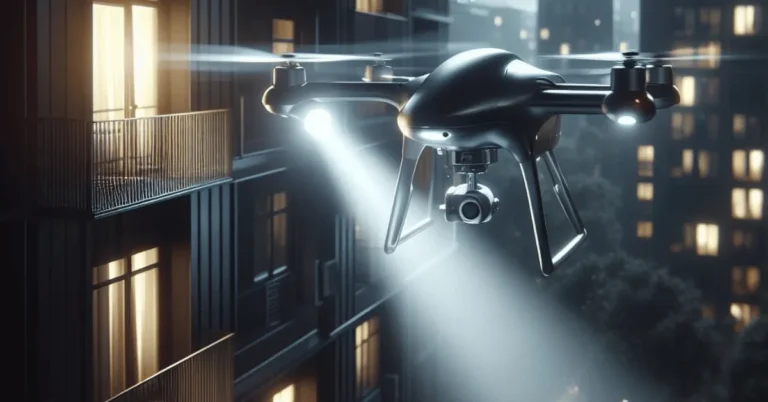What Industry Uses Drones The Most? A Comprehensive Guide 2023
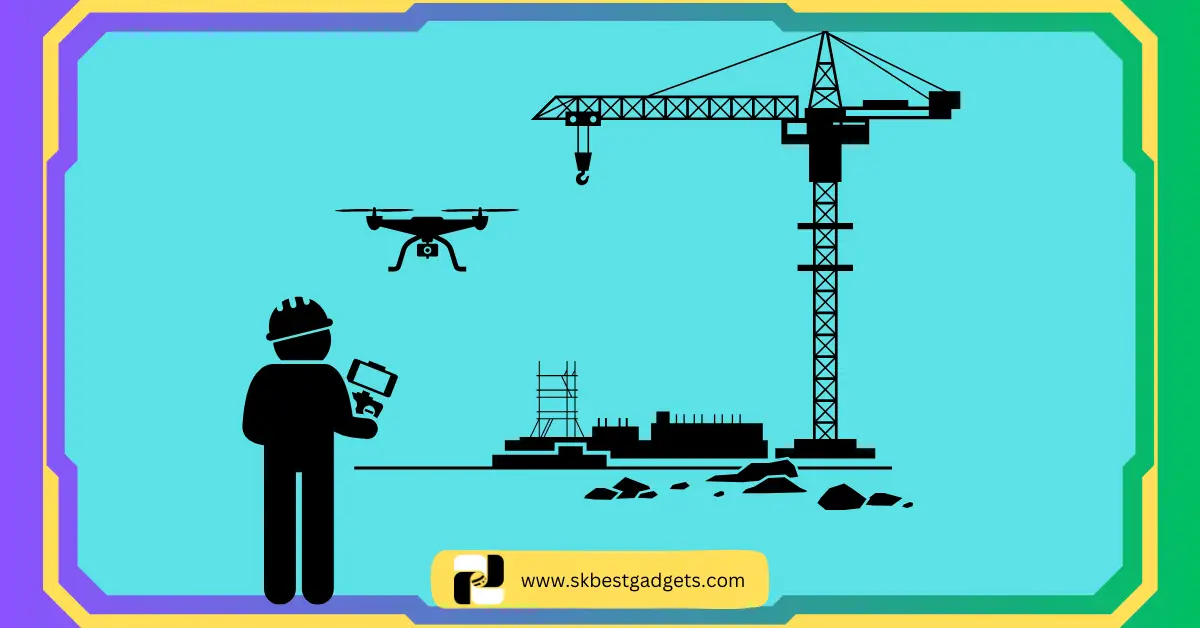
Hey there, folks! Get ready to dive headfirst into the exciting world of drones and the industries they’re shaking up.
As a drone enthusiast and blogger, I’ve had the awesome opportunity to see firsthand how these flying wonders are changing the game across various sectors.
In this article, I’m your go-to guide as we explore how drones are powering up different industries. We’re talking about everything from agriculture to construction, media, real estate, and more.
So, whether you’re a fellow drone fanatic or just curious about what these aerial marvels can do, hop on board this journey with me.
We’re about to uncover all the cool ways drones are reshaping industries, making processes smoother, and propelling us into the future. And ultimately your question: What industry uses drones the most? is going to get solved.
Key Takeaways
- Drones are revolutionizing the media and entertainment industry.
- Drones are being used to inspect oil and gas pipelines and rigs safely and efficiently.
- Drones are helping to save lives in search and rescue missions.
- Drones are being used to count and track animals in the wild.
- Drones are being used to survey and monitor mining operations.
- Drones are being used to deliver medical supplies and other goods in remote areas.
- Drones are being used to provide aerial photography and mapping services.
- Drones are being used to inspect infrastructure and buildings.
- Drones are being used to monitor traffic and collect data.
- Drones are being used for a variety of other purposes, such as agriculture, law enforcement, and delivery.
Agriculture:
Drones are changing the game in farming, giving farmers an awesome aerial view. They help keep an eye on crop health, spot problems, and make sure the watering is just right, all to supercharge yields and keep things eco-friendly.
How are drones used in agriculture?
Drones are like farming’s superhero sidekicks, changing the game for farmers worldwide. Picture this: They’ve got high-tech cameras and super sensors that snap detailed field photos in real-time.
Farmers use these pics to spot trouble early, like crop issues or pest invasions. That means less need for widespread chemical treatments and more eco-friendly farming.
But wait, there’s more! Drones are top-notch in precision farming. They can whip up fancy 3D maps of fields, helping farmers fine-tune irrigation and fertilization.

This keeps resources in check, slashing waste, and being kind to the environment. And don’t forget, they’re also soil moisture detectives, helping farmers decide when and where to water. Talk about conserving resources!
Oh, and here’s the kicker: some drones even handle planting and seeding, spreading seeds evenly across fields. This isn’t just a time-saver; it means better, more even crop growth and higher yields.
These flying wonders are changing the farming game, boosting productivity, and keeping things eco-friendly.
And with tech evolving, it’s a safe bet that drones will play an even bigger role in feeding our growing world while being kind to Mother Earth.
What benefits do drones bring to farmers, such as crop monitoring and pest control?
Drones bring loads of perks to farmers, especially when it comes to keeping an eye on crops and battling pests. Check out these cool benefits:
- Early Warning: Drones zoom over fields, spotting pests, diseases, and issues pronto. That means farmers can swoop in with solutions before things get out of hand.
- Precision Spraying: Drones are like crop whisperers, applying just the right amount of pesticides and herbicides. It’s like magic, keeping crops healthy while being gentle on the environment.
- Bye-bye, Labor: Drones roll up their sleeves (figuratively) and take care of tasks that used to need lots of hands. That saves farmers time and bucks.
- Safety First: Drones tackle jobs that are risky for humans, like checking tall crops or getting into tight spaces.
- Super Speed: These flying marvels cover massive areas in no time, so farmers can check more boxes on their to-do lists.
- Smart Choices: Drones collect data that helps farmers make savvy decisions about watering, fertilizing, and pest control.

Take pest monitoring, for example. Drones use cameras and sensors to spot changes in plant health or color. By catching problems early, farmers can stop them in their tracks.
And when it’s time for pest-busting, drones apply pesticides and herbicides with laser precision. This eco-friendly approach cuts down on chemical use, protecting the planet and our health.
All in all, drones are farming’s secret weapon when it comes to crop watching and pest control. And as tech keeps evolving, their superpowers will only get stronger.
Construction:
Drones are rocking the construction scene! These flying champs tackle important jobs like doing super-detailed aerial surveys, keeping tabs on progress down to the inch, and making sure everything’s super safe.
They’re the construction crew’s new best buddies, saving time and making projects run smoother than ever.
In what ways are drones employed in the construction industry?
Drones are all the rage in construction these days. They zip around construction sites, creating super-detailed 2D and 3D maps in a flash. It’s like having a tech-savvy assistant that helps with project planning, spotting problems, and more.
But wait, there’s more! Drones are also like construction site inspectors. They zoom in on things like concrete cracks or scaffolding trouble. This not only keeps things safe but also saves big bucks on repairs.
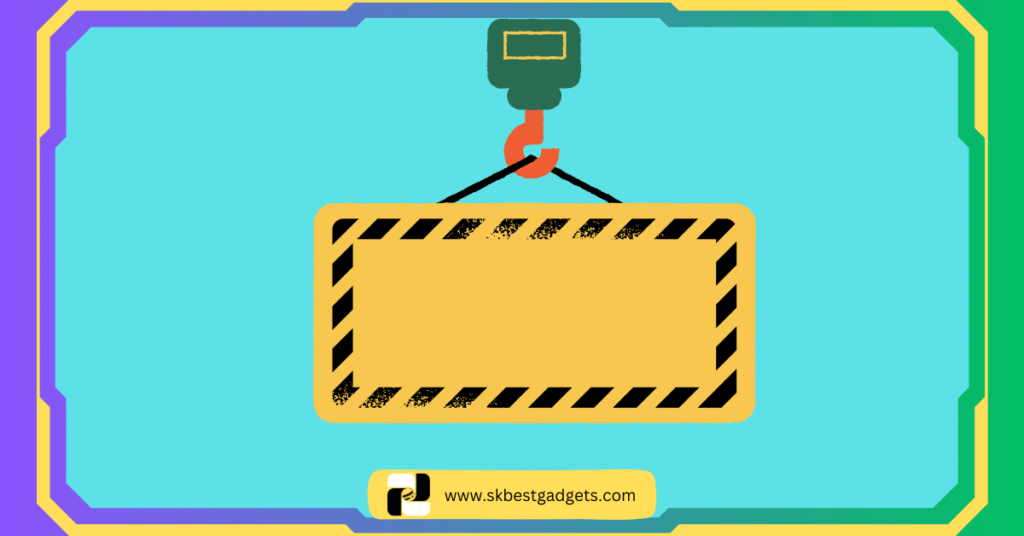
And don’t forget about progress tracking. Drones give real-time updates to clients and big shots, making sure everything’s on track and budget.
Oh, and they’re delivery champs too. Drones help haul materials and gear to construction sites, making things super-efficient and safe.
But here’s the cool part: they’re also mapping and modeling pros. They whip up detailed maps and models of construction sites, which is gold for planning and designing.
Plus, in emergencies like fires or gas leaks, drones swoop in for fast action, boosting safety and keeping damage in check.
So, even though drones are still kind of new in construction, they’re like future project managers. They do the heavy lifting, provide vital data, and make everything safer, faster, and better.
How do drones assist in site surveys, progress tracking, and safety inspections?
Drones are total game-changers in construction, no doubt about it. They wear many hats, so let’s break it down:
Site Surveys: Picture this – drones zip around construction sites, making super-precise 2D and 3D maps in no time. It’s like having a tech-savvy assistant who helps with project planning, spots issues, and measures stuff to make sure everything’s A-okay.
Progress Tracking: Drones are the secret sauce for keeping tabs on construction progress. They snap pics or shoot videos of the site at different times.

The result? Awesome timelapse videos showing the entire project coming to life. Plus, clients and bigwigs get real-time updates, making sure things stay on track and budget-friendly.
Safety Inspections: Safety first, right? Drones are like the eagle-eyed inspectors of construction sites. They zoom in on things like cracks in concrete or trouble with scaffolding. This not only keeps things super safe but also saves big bucks on repairs.
And that’s not all:
Creating 3D Models: Drones are like 3D modeling wizards, making detailed models of construction sites. It’s gold for planning, designing, and analyzing.
Identifying Hazards: They’re pros at spotting potential dangers on construction sites, like shaky ground or exposed wires. Safety first, remember?
Documenting Progress: Drones keep a super-detailed record of construction progress. It’s like a diary for the project.
Overseeing Operations: They’re the watchful eye, making sure everything runs smoothly and safely.
So, in a nutshell, drones are construction superheroes, making site surveys, progress tracking, and safety inspections a breeze. And with tech always evolving, who knows what other cool tricks they’ll learn in the future? But for now, let’s check out some real-world examples:

Golden Gate Bridge Construction, United States: Drones are hard at work, keeping a close watch on the legendary Golden Gate Bridge construction. They’re the guardians of big infrastructure projects, ensuring they stay on point and budget.
New Stadium Construction, Australia: Over in Australia, drones are like the project babysitters, keeping an eagle eye on the construction of a brand-new stadium. It’s all about staying on schedule and within budget.
Safety Inspections, China: In China, drones are the safety patrol at construction sites. Their watchful eyes have bumped up safety standards and reduced accidents, showing just how important they are for keeping things safe and sound in construction.
These real-life examples prove that drones are the real deal when it comes to site surveys, progress tracking, and safety inspections. And with tech always getting better, who knows what else they’ll conquer next in the construction world?
Media and entertainment
Drones are like the cool new kids in the media and entertainment block. They bring the “wow” factor with epic aerial shots in movies and events, making live coverage pop, and giving news a whole new angle.
Plus, they’re the secret sauce for awesome photos and videos, adding a cinematic touch to anything you’re creating. And guess what? They’re even behind those mind-blowing virtual and augmented reality experiences.

Drones are the go-to for making jaw-dropping and super-engaging content.
How are drones used in the media and entertainment sector?
Drones are becoming the new rockstars in the media and entertainment world, and they’re not just here to play around. Check out what they’re up to:
Filming and Photography: Drones are like pro photographers in the sky, snapping breathtaking aerial shots for movies, TV shows, and ads. They get those epic bird’s-eye views and crazy-close shots of fast-moving things that were almost impossible before.
Live Broadcasting: Drones are the live event MVPs. They zoom around concerts, sports, and news conferences, giving viewers a unique perspective that makes you feel like you’re right there in the action.
Vlogging and Filmmaking: If you’re into vlogging or making films, drones are your new BFFs. They can capture stunning aerial footage that adds a whole new dimension to your videos.
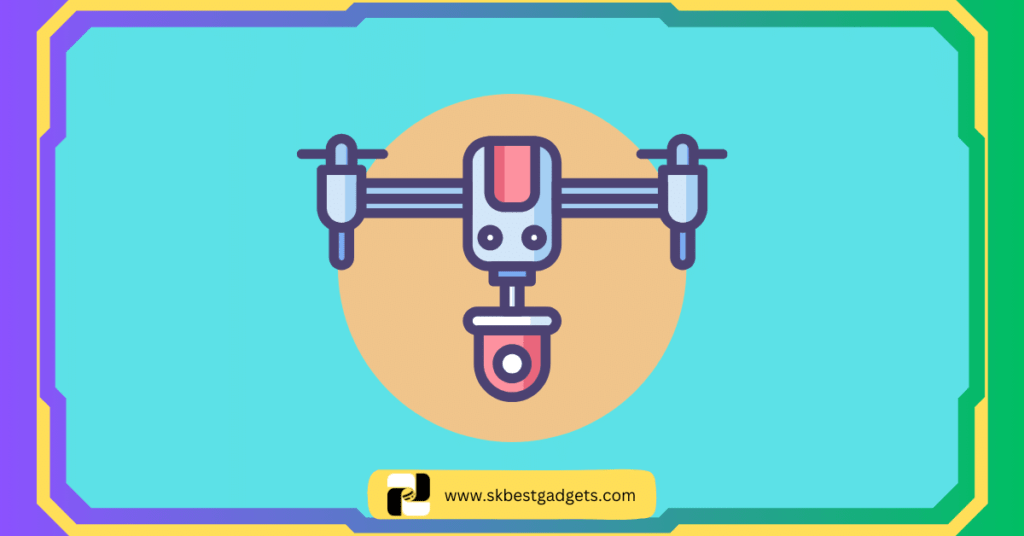
Advertising: Drones are ad magicians. They fly banners and create mind-blowing 3D projections in the sky, making ads unforgettable.
Reality TV: Even reality TV gets a boost from drones. They capture behind-the-scenes moments and dramatic aerial shots, making the shows even more exciting.
Traditional Filmmaking: Drones are breaking into traditional filmmaking too. They snag those epic aerial shots that make movies like “Star Wars: The Force Awakens” look out of this world.
And here’s the kicker: Drones are still just getting started in the media and entertainment biz. They’re like the future of creating mind-blowing content, and we can’t wait to see what they’ll do next. But check out these cool examples:
“The Martian” Movie: Drones took us to Mars by capturing the Martian landscape in the movie “The Martian.”
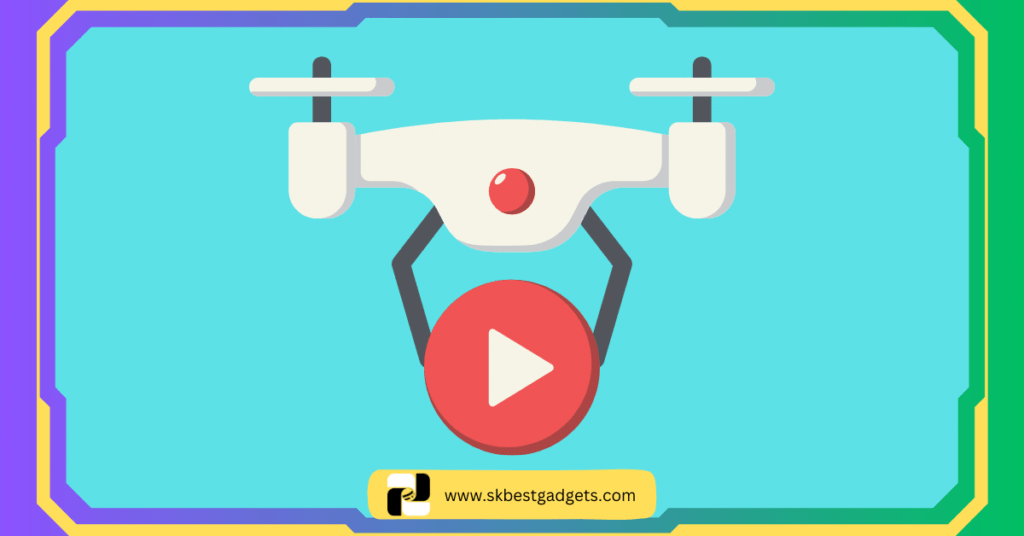
“Game of Thrones” TV Show: Drones soared over the fictional kingdom of Westeros, giving “Game of Thrones” that epic vibe.
Apple iPhone 13 Commercial: Drones took center stage by creating a jaw-dropping aerial shot of the Golden Gate Bridge in an Apple iPhone 13 commercial.
These examples show that drones are like the Swiss Army knives of the media and entertainment world, and they’re just getting warmed up. Expect even more mind-blowing content as drone tech keeps evolving.
What benefits do drones bring to media and entertainment, such as capturing aerial footage and enhancing production value?
Drones bring a bunch of cool perks to the media and entertainment world, like:
Epic Aerial Shots: Drones nail those breathtaking aerial shots you’d struggle to snag with old-school methods like helicopters or planes. Think killer visuals for movies, TV shows, ads, and more.
Up the Production Game: They’re your secret weapon for ramping up the production quality. With drones, you can grab smooth, steady shots that are tricky with other gear. Plus, they’re your go-to for getting footage in tough-to-reach or risky spots.

Budget-Friendly: Drones won’t break the bank like traditional aerial filming. Plus, they’re a time-saver on setup and operation, which spells savings for production companies.
Safety First: Send drones where humans can’t safely tread, like war zones or disaster zones, for some seriously brave filming.
Versatility: These flying wonders can snap all sorts of shots, from wide-angle panoramas to super-close details.
Unleash Your Creativity: Get your filmmaker mojo going with drones. They let you craft eye-popping visuals and unleash your creative beast, impossible with other methods.
All in all, drones are the media and entertainment industry’s best buds. They deliver jaw-dropping aerial shots, level up your production game, and save you some serious cash. And the best part? They do it all safely and let you go wild with your creativity.
Real Estate:
Drones are changing the real estate game by effortlessly capturing stunning aerial photos and videos of properties. They bring a fresh perspective that’s a game-changer for marketing, virtual tours, and property check-ups.

Drones simplify the way we display listings, making it super engaging for potential buyers and giving real estate folks a real edge in the market.
What role do drones play in real estate and property management?
Drones are becoming a big deal in real estate and property management, and here’s why:
- Real Estate Hype: Drones are like the cool photographers of the property world. They take awesome aerial shots and videos that make houses look amazing. So, if you’re selling a place, drones are your best friend.
- Inspector Gadgets: Drones are the superheroes of property inspections. They can fly up and check out roofs, find damage, and spot overgrown gardens. This means you save money on fixing stuff.
- Land Detectives: When you’re planning to build something new, drones come in handy. They scout the land, helping you figure out the best spots and any potential problems like zoning issues or environmental hiccups.
- 3D Magic: Drones can even create 3D models of properties. It’s like virtual reality for real estate, making it easier to plan renovations or expansions.
- Disaster Watchdogs: When disasters strike, drones are there to assess the damage. This helps insurance companies and governments figure out what needs fixing first.

Drones are still kind of new in these fields, but they’re growing fast. As they get even cooler, they’re going to play an even bigger role in real estate and property management.
Oh, and here are some real-life examples:
- In California, a real estate agent used drones to make awesome property videos, speeding up sales and boosting property values.
- A property management company in Florida used drones to inspect roofs, spotting issues that could’ve caused leaks and damage.
- A construction company in Texas did land surveys with drones, making sure their projects stayed on time and budget.
- In New York City, drones helped assess flood damage, making it easier to figure out what needed fixing first.
So yeah, drones are shaking things up in the property world, and they’re just getting started!
How can aerial photography and videography benefit real estate marketing?
Let’s talk about how aerial photography and videos can seriously up your real estate marketing game:
- Seeing the Bigger Picture: Drones give you that cool bird’s-eye view of a property. Perfect for places with sprawling lawns, multiple buildings, or killer vistas. It’s like a sneak peek into how the property fits into its surroundings.
- Spotlight on Perks: Drones can capture epic shots of stuff that’s hard to show from the ground – think swimming pools, tennis courts, or epic mountain views.
- Size Matters: If you’ve got a big property or something with a tricky layout, aerial photos give buyers a better feel for the space.
- Location, Location, Location: Drones also reveal where your property sits and what’s around it. Super useful for buyers trying to picture how it fits their lifestyle.
- Wow Factor: Using drones instantly makes your marketing materials look modern and professional. Your listings will stand out in the crowd.

Bonus: You can even use aerial shots to create 360-degree virtual tours. Buyers can explore a property from their couch – how cool is that?
So, if you’re in real estate, consider adding some drone magic to your marketing. It’s the way to make your properties look informative and eye-catching.
Mining:
Drones have transformed mining! They’re like superheroes for the industry, doing everything in a cool, cost-effective way.
Miners use them to take awesome aerial photos and maps, which help them figure out the lay of the land and keep an eye on how things are changing.
Plus, drones make it way safer for mine inspectors, which is a big win for everyone. They’re like the Swiss Army knives of mining – great for keeping track of how much more you’ve got and making the whole operation run smoother. In a nutshell, drones are the mining world’s BFFs!
How are drones utilized in the mining sector?
Drones are taking over the mining world with a bunch of cool stuff they can do:
- Surveying and Mapping: Drones help us quickly and accurately map out massive mining areas. Think of them as our mining cartographers. This helps us plan, optimize, and spot hazards like a pro.
- Inspection: They’re our mining inspectors, checking out all the equipment and structures. Conveyor belts, dams, you name it. Catching problems early is their specialty, which saves us big bucks and keeps us safe.
- Monitoring: Drones keep an eye on things, like our stockpiles, traffic, and water levels. It’s like having a bunch of little overseers making sure everything’s running smoothly.
- Search and Rescue: When someone or something goes missing in the middle of nowhere, drones swoop in to find them. They’re like the superheroes of rescue missions.
- Delivery: Drones even help with deliveries to far-flung mining sites. No more risky road trips for supplies; these drones are like our FedEx in the sky.
- Training: They’re also our training buddies, showing newbies the ropes in safety and mining operations. They record training sessions, making it easier to learn and improve.

Drones are our mining sidekicks, making things safer and more efficient. And they’re not stopping there – as drone tech gets even cooler, we can expect even more epic uses in the mining world.
In real-life terms, some mining rock stars like Barrick Gold Corporation use thermal camera drones to spot trouble in their Nevada mines.
Rio Tinto uses them to keep an eye on their tailings dams in Australia, and Anglo American delivers supplies to South Africa with these flying machines.
Even Newmont Mining Corporation gets in on the action, using drones to train their teams and make safety a priority.
So yeah, drones are changing the mining game, and the best part is, they’re just getting started.
What advantages do drones offer for surveying and monitoring mining operations?
Drones are like the secret weapons of mining, bringing a whole bunch of awesome perks to the table:
Speed Demons: These flying marvels are crazy fast and efficient. They scoop up data way quicker than old-school methods like humans with clipboards or ground vehicles. That means we save time and money while keeping our folks out of risky spots.
Pinpoint Accuracy: Drones have a superpower – precision. They can gather data down to a few centimeters, which is a big deal in mining. Think stockpile measurements and volume calculations, where every inch counts.

Safety First: Safety is the name of the game in mining, and drones are our safety superheroes. They go where it’s tough or downright dangerous for us, like scaling high walls or diving into deep pits. Less risk for us, fewer accidents.
Budget-Friendly: Drones won’t break the bank. Compared to pricey helicopter surveys, they’re a steal to buy and run.
Weather Warriors: Rain or shine, day or night, drones don’t care. They work in all conditions, making them the Swiss Army knives of mining.
And they’re not just hanging around looking cool. Drones roll up their sleeves and get stuff done, like measuring stockpiles, watching over excavations, checking slope stability, mapping out vegetation, and dodging obstacles. It’s like they’ve got a job for every day of the week!
So yeah, drones are like our mining sidekicks, making things faster, safer, and way more efficient. And the best part? They’re only getting better with time.
Oil and Gas:
Drones are like the oil and gas industry’s secret weapon. They’re the go-to for checking out all the important stuff like pipelines and offshore rigs.
If there’s a leak or something’s wonky with the gear, drones are on it. Plus, they’re like the eyes in the sky, helping with exploring, mapping, and keeping an eye on those far-off sites. They make everything run smoother and safer in this crucial field.
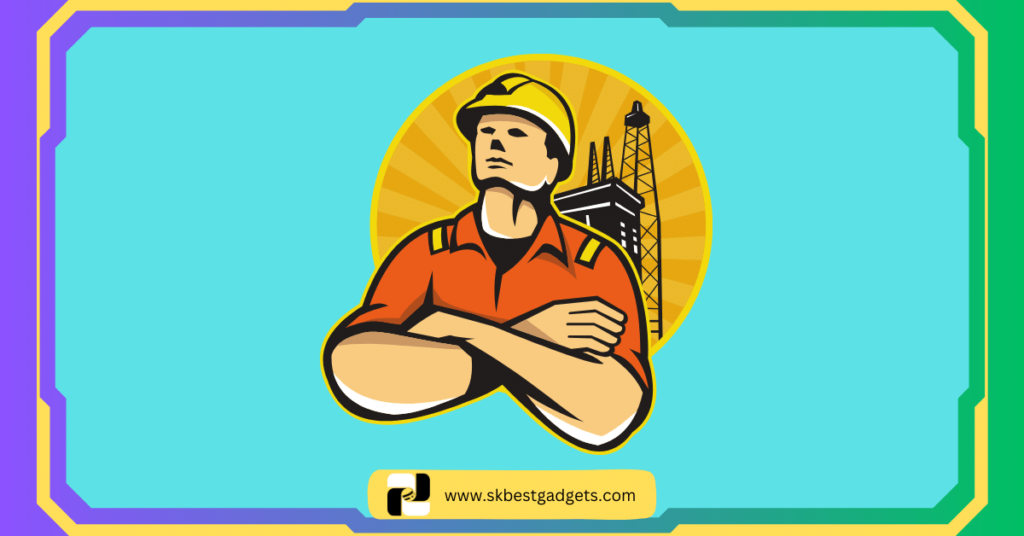
What are the applications of drones in the oil and gas industry?
Drones are like the cool sidekicks in the oil and gas world, doing all kinds of handy stuff:
Inspect and Fix: They’re the inspectors, checking pipelines, power lines, and oil rigs for problems. Plus, they’re not afraid to get their hands dirty – they can even help with cleaning and painting.
Map the Way: Drones are the mapmakers, showing us what’s what in oil and gas fields. That helps us drill better, produce smarter, and stay safe.
Find the Good Stuff: They’re our treasure hunters, sniffing out oil and gas reserves with seismic data. It’s faster and cheaper than old-school methods.
Gas Detectives: With infrared cameras, drones spot invisible methane and gas leaks, saving the environment and keeping us safe.
Emergency Heroes: When things go haywire, drones come to the rescue. They check out oil spills, and fires, and even deliver emergency supplies.
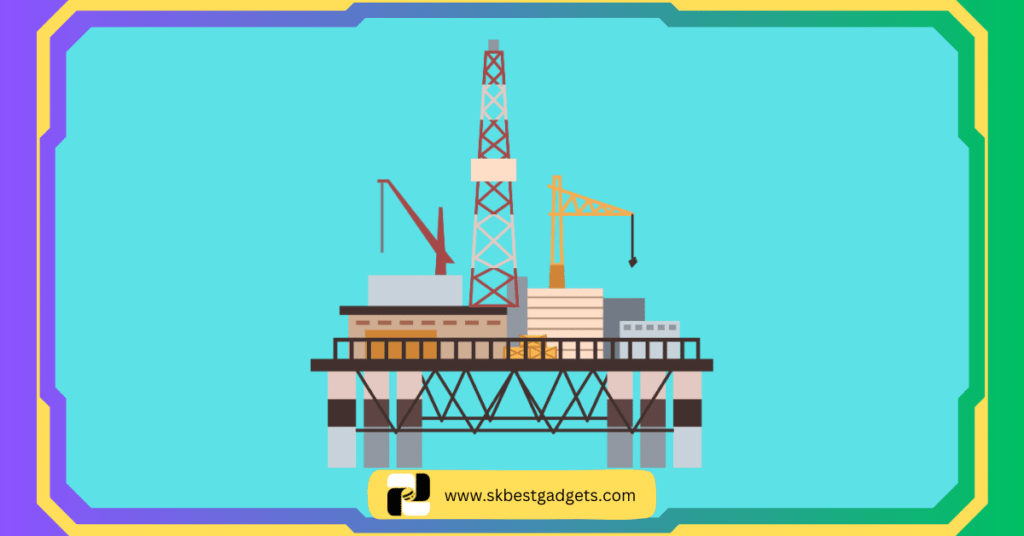
Heavy Lifting: Drones can haul materials and gear to tricky spots, making life easier and safer.
Even though drones are just getting started in the oil and gas world, they’re growing fast. They’re great at reaching tough spots, collecting data super quickly, saving money, and boosting safety. And guess what? They’re only going to get more awesome with time.
Some big-name players in the industry like BP, Chevron, and ExxonMobil are getting in on the drone action. They’re investing big bucks to make operations smoother, safer, and more efficient.
How do drones enhance safety and efficiency in oil rig inspections and pipeline monitoring?
Drones step up the game when it comes to making oil rig inspections and pipeline monitoring safer and more efficient. Check out how they do it:
- Reduced Risk: Picture this – no need for folks to be physically present on the rig or near the pipeline during inspections. Drones can be operated remotely, waving goodbye to accidents like falls, machinery mishaps, or exposure to hazardous stuff.
- Cover More Ground: Drones zoom over large areas in no time. They’re like speedy inspectors, catching issues early on before they become major troublemakers.
- Super Data Collection: Equipped with nifty sensors like cameras, thermal imaging gear, and radar, drones gather all sorts of data about the rig or pipeline. They spot problems that our human eyes can’t.
- Cost-Effective: Forget the expensive scaffolding and gear. Drones are budget-friendly for inspections since they can be operated from afar.

And guess what? Drones can do real-time monitoring too, playing both the hero in prevention and the speedy responder.
So, to wrap it up – drones beat traditional methods any day for inspecting oil rigs and pipelines. They’re all about boosting safety, and efficiency, and collecting loads of detailed data. No wonder they’re becoming the new rock stars in the oil and gas industry!
Here are some cool things they do:
- Exterior Inspections: Spotting corrosion, cracks, and damage on the outside of oil rigs.
- Interior Inspections: Exploring the insides of rigs, including tanks and pipelines, using thermal imaging to find sneaky problems.
- Leak Detection: Keeping a keen eye on pipelines for any leaks or damage.
- Oil Spill Surveys: Tracking oil spills and figuring out how far they’ve spread.
Drones are like the tech wizards of the oil and gas world, and as they keep evolving, they’re set to do even more incredible stuff!
Search and Rescue:
Drone tech has transformed the way we do search and rescue stuff. These nifty gadgets come packed with fancy high-res cameras and thermal imaging gizmos that help find folks who’ve gone missing, check out the damage, and plan rescue ops super accurately.

Drones can even get into those tricky, tough-to-reach spots, keeping our brave responders out of harm’s way. Plus, they zip around big areas in a flash, sending us real-time info that’s been a lifesaver in emergencies. Drones are like our trusty sidekicks in modern search and rescue adventures.
How do drones aid in search and rescue missions?
Drones are like superheroes in search and rescue missions. They zoom over vast areas super fast, and that’s a game-changer when every second counts. Take the 2015 Nepal earthquake, for example – drones were the heroes of the day, helping find survivors.
But what makes drones even cooler is their ability to go where humans can’t. They’re like the ultimate explorers, tackling rough terrain like it’s a walk in the park. So, if someone’s stuck in a remote, tricky spot after an avalanche or mudslide, drones come to the rescue.
Now, here’s the high-tech part: drones are armed with fancy sensors and cameras. We’re talking thermal imaging, night vision, and super-detailed cameras. These gizmos help rescue teams spot survivors who might be hiding or stuck in tough-to-reach spots.
And the magic doesn’t stop there. Drones can beam real-time info back to the ground crew. Think of live videos of the search area or exact survivor locations. That info is gold for making quick decisions during rescue missions.
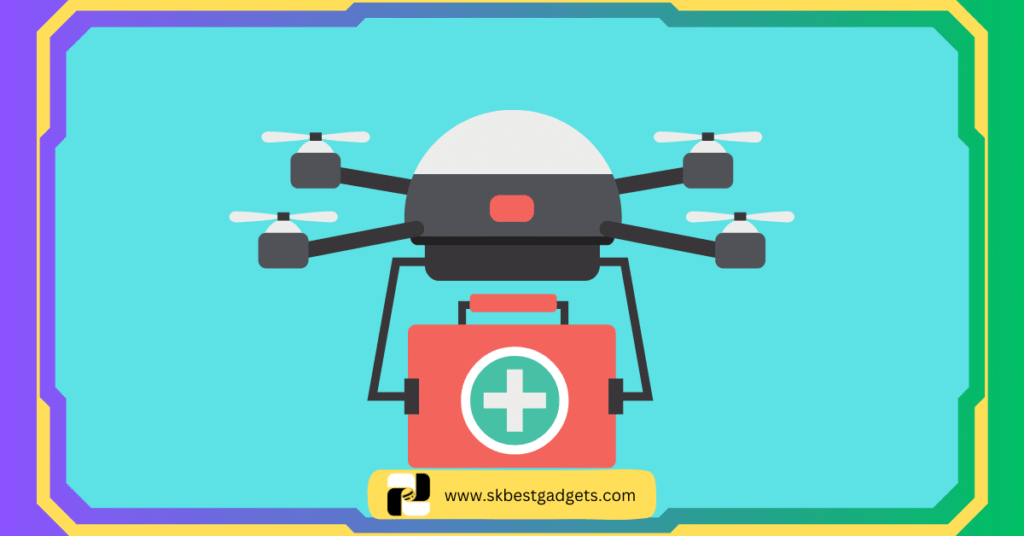
But wait, there’s more! Drones aren’t just watchers; they’re delivery pros too. They can drop off life-saving stuff like food, water, and medical gear to stranded survivors in hard-to-reach places. Talk about a lifesaver!
To sum it up, drones are like the ultimate sidekicks in search and rescue missions. They cover the ground lightning-fast, conquer tricky terrain, and pack some serious tech. That’s why they’re a rescue team’s best friend when it comes to saving lives.
And here are some real-life hero stories:
- In 2018, drones rocked the search for survivors in Washington state after a mudslide. They scouted rough terrain and streamed live video, leading to successful rescues.
- In 2019, drones with thermal cameras swooped in to help after a shipwreck near Japan. They spotted trapped survivors from above, making their rescue possible.
- In 2020, drones were lifesavers again after a tornado in Oklahoma. They flew over the disaster area, beaming real-time video and helping rescuers save multiple lives.
These stories are just a taste of how drones are changing the game in search and rescue missions. With drone tech getting better all the time, they’re bound to be even more heroic in the future.
What capabilities do drones have for locating missing persons or assessing disaster areas?
Drones are like superheroes when it comes to finding missing folks and checking out disaster zones. Check out their cool abilities:

- Zoom Mode: Drones are lightning-fast at covering huge areas, even in tough spots. Think of them as the speedsters of search and rescue.
- Sensor Squad: These drones come packed with all kinds of sensors – thermal, night vision, super-detailed cameras. They can spot heat, work in the dark, and take super-clear pics of what’s going on.
- Live Streamers: Drones don’t keep their adventures to themselves. They stream what they see in real time, so search teams can see what’s happening and make quick decisions.
- Brave Explorers: Drones don’t mind going where it’s dangerous or hard to reach. Collapsed buildings, active volcanoes – you name it, they’ll go there and keep our search teams safe.
Now, in disaster scenarios, these superhero drones can:
- Check the Damage: They do a flyby and check out what’s been wrecked.
- Find Survivors: Drones are pros at finding people in need.
- Spot the Dangers: They’ll tell you if there’s something dangerous around.
- Fire Watch: Drones keep an eye on how fires spread.
- Delivery Service: Need supplies? Drones can drop them off to survivors.
In short, drones are the real MVPs in search, rescue, and disaster situations. They’re like the upgraded version of traditional methods, and they keep getting better.
Here are some real-life drone stories:
- In 2019, a drone with thermal vision found a lost hiker in the Sierra Nevada mountains.
- In 2020, drones checked out the damage from the big explosion in Beirut.
- And in 2021, they delivered supplies to folks hit by Hurricane Ida’s floods.
These stories prove that drones are lifesavers and make a big difference in tough times.

Environmental Conservation:
Drones are like eco-heroes! They’re equipped with high-tech cameras and sensors that help us keep a close eye on nature.
Whether it’s counting wild animals, spotting deforestation, or catching those sneaky poachers, drones are like the trusty sidekicks of environmentalists.
Plus, they’re pretty handy for exploring tricky spots like dense rainforests and far-off coastlines. With drones, we’re like nature’s detectives, making smart choices to protect our amazing planet.
What is the role of drones in environmental conservation efforts?
Drones are like nature’s Swiss Army knives – super versatile! Check this out:
- Wildlife Watchers: Drones spy on animals, check out their hangouts, and even see what they’re up to. They’re like the paparazzi of the wild but for a good cause.
- The Eco-Cops: They’re on the lookout for bad stuff like poaching, illegal logging, and oil spills. If Mother Nature had her police force, drones would be top recruits.
- Map Masters: Drones can map huge areas – land and water – to see how we humans are messing with the environment. They’re like Earth’s personal cartographers.
- Data Detectives: With cool sensors, they sniff out stuff like air quality and water conditions. Think of them as environmental detectives, solving mysteries about our planet.
- Problem Solvers: Drones can even make it rain or fight wildfires. They’re like superhero firefighters, but for forests.

Drones are epic because they can cover big areas super fast, even the remote ones. And guess what? As drone tech gets even cooler, they’ll do even more to keep our planet in tip-top shape.
Oh, and check out these real-life superhero drone stories:
- Africa: Drones are the ultimate poacher-busters, watching over protected areas 24/7.
- Amazon Rainforest: They catch illegal loggers in the act, giving them no place to hide.
- Indonesia: Drones protect mangrove forests and save coastal towns from rising seas.
- United States: They keep an eye on city air and glaciers, helping us understand climate change.
Drones are like the Avengers of the environment – always ready to save the day!
How do drones help in wildlife monitoring and habitat preservation?
Drones are like the wildlife world’s secret agents – they’re awesome for lots of reasons:
Animal Counters: Drones are pros at counting and tracking animals. Imagine counting elephants in Africa, following polar bears in the Arctic, or checking out sea turtles in the Galapagos Islands. It’s like a wildlife reality show!
Crime Stoppers: They’re like the cops of the wild. Drones bust bad guys doing stuff like poaching, illegal logging, and mining. They’ve caught poachers in Africa, watched over the Amazon rainforest to stop illegal loggers, and kept an eye on miners in the Arctic.

Habitat Detectives: Drones are like habitat doctors. They check on forests, wetlands, and coral reefs to see if they’re healthy. If they find trouble, they help make a plan to fix it. Think of them as the doctors for the planet!
Nature Teachers: Drones can also be teachers. They make cool videos about animals, give virtual tours of wildlife spots, and teach us about saving nature.
So, drones are the MVPs of wildlife and nature protection. They count critters, catch crooks, check on habitats, and even teach us stuff. And as drones get even cooler, they’ll do even more for our wild friends!
Future Developments:
In the fast-changing world of future tech, drones are gearing up to play a major role. These flying wonders are all set to shake things up across various industries.
From making farming smarter to helping out in disasters with quick aerial checks, speeding up deliveries with drone deliveries, and even wowing audiences with jaw-dropping aerial shows in entertainment, drones are becoming the cool kids on the block.
Plus, they might just become city planning superheroes, checking out infrastructure and keeping an eye on the environment, all while boosting sustainability and smart city vibes.
What are the potential future developments and innovations in drone technology?
Drones are on the fast track to becoming even cooler! Check this out: First up, they’re getting super smart with AI. Think of it like drones leveling up in the brains department.

They’ll soon be able to do complex stuff all by themselves, like helping out in emergencies and checking out our buildings.
And here’s the kicker – they’re breaking free from their battery limits. Yep, better batteries are on the way, which means drones can fly longer and farther. That’s a game-changer for all the cool things they can do.
But wait, there’s more! Drones are hitting the gym (well, sort of). They’re getting stronger and can carry heavier stuff. Imagine drones delivering packages or even helping with construction work – the sky’s the limit!
Oh, and they’re getting sharper vision too. Their sensors are getting an upgrade, so they can collect super-detailed info for things like maps and keeping an eye on the environment.
Last but not least, safety is a big deal. They’re working on tech to keep drones from bumping into stuff and protect them from sneaky hackers.
So, the future of drones? It’s looking pretty fly!
How might drones continue to impact and revolutionize various industries?
Drones are making waves in different industries, and guess what? They’re not stopping anytime soon! Check out how they’re set to shake things up:
Farming: Right now, drones are helping with stuff like checking crops and mapping fields. But in the future, they might be planting, harvesting, and weeding all on their own, making farming super efficient and eco-friendly.

Construction: Drones are already inspecting construction sites and doing land surveys. But imagine this: they could be building walls, laying bricks, and painting like pros. That means quicker and cheaper construction projects.
Delivery: You’ve heard about drones delivering packages, right? Well, get ready for more. They could be delivering food, medicine, and even people, making transportation a breeze and saying goodbye to traffic jams.
Entertainment: Drones are great at getting those epic aerial shots in movies and TV shows. But soon, they might take us on virtual reality tours and bring live concerts to a whole new level of awesome.
Security: Cops and security folks use drones to keep an eye on things. In the future, they could have super surveillance powers, making it even tougher for the bad guys.
Search and Rescue: Drones are heroes in finding lost folks and checking out disaster scenes. But they’re gearing up for bigger challenges, like finding people in collapsed buildings or remote areas during daring rescues.
And this is just the start! As drone tech gets better, who knows what other cool stuff they’ll do in the coming years?
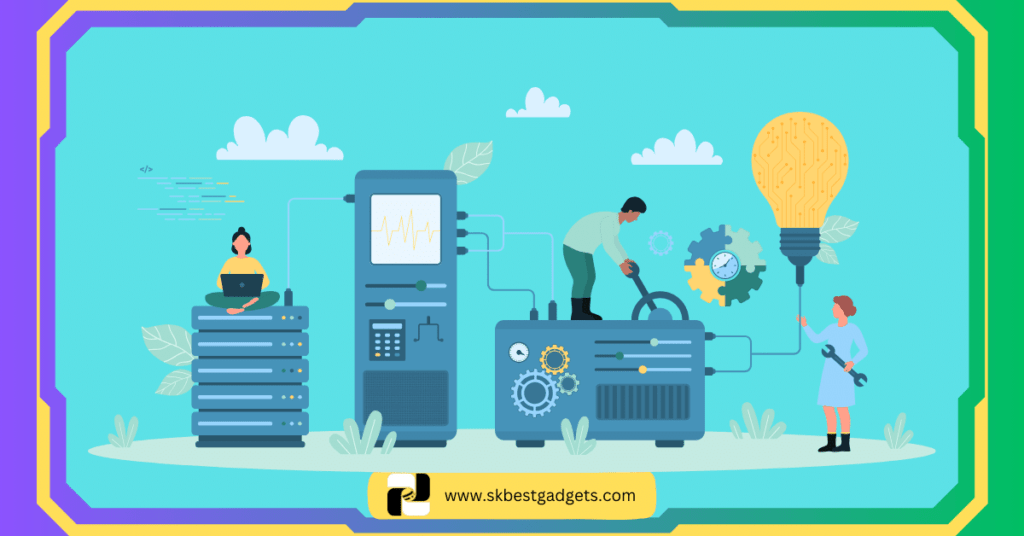
Important FAQs
How do drones benefit the agriculture industry?
What advantages do drones bring to construction projects?
How are drones used in the media and entertainment sector?
What role do drones play in real estate marketing and property management?
How do drones impact the mining industry, and what applications do they have?
What are the applications of drones in the oil and gas industry?
How do drones enhance safety and efficiency in oil rig inspections and pipeline monitoring?
How do drones contribute to environmental conservation efforts?
Final Thoughts
In conclusion, drones have proven to be transformative assets in various industries, propelling us into a future where efficiency, safety, and innovation go hand in hand.
From aiding farmers in crop management to enhancing construction site surveys, capturing breathtaking moments in media and entertainment, revolutionizing real estate marketing, ensuring responsible mining practices, assisting in oil and gas operations, and even becoming lifesavers in search and rescue missions, drones have become indispensable.
As we look ahead, the sky’s the limit for drone technology. With advancements in AI, improved sensors, and heightened safety measures, the potential applications seem limitless. Drones are poised to not only streamline existing processes but also unlock new realms of possibilities.
But the journey doesn’t end here. We want to hear from you! Have you had any firsthand experiences with drones in these industries?
Are there any exciting developments or use cases we missed? Please share your thoughts, insights, and stories in the comments below. Your perspective adds depth to this conversation.
Moreover, if you found this article as fascinating as we do, don’t keep it to yourself. Share it with your friends, colleagues, and fellow drone enthusiasts.
Let’s spread the word about the incredible impact of drones on industries and inspire others to explore the endless possibilities of this remarkable technology. Together, we can shape a future where drones continue to soar to new heights!
What Does Sport Mode Do on a DJI Drone? A Comprehensive Guide 2023
Curious about Sport Mode on your DJI drone? 🚀🚁 Dive into this comprehensive 2023 guide to discover the thrill and features it brings. Elevate your drone experience! ✈️🌟

